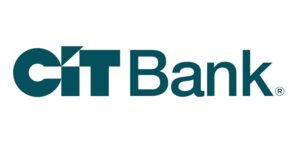
When deciding on which CD to invest in, you might wonder to yourself, whether you’re getting the best rate on the market. This is crucial because one you choose a CD, you’re locking in that rate for months or years.
You can never predict what CD rates will look like in the future, but you can always use strategies to reduce the risk of missing out when higher rates will appear. At the same time, you will still be able to take advantage of the guaranteed returns and federal insurance that CDs offer.
Take into account these things when looing for a CD investment.
| Service Credit Union | 4.50% APY 6-Month CD | Review |
| Western Alliance Bank | 4.50% APY 3-Month CD | Review |
| Western Alliance Bank | 4.40% APY 6-Month CD | Review |
| Rising Bank | 4.40% APY 6-Month CD | Review |
| Rising Bank | 4.35% APY 15-Month CD | Review |
| First Tech Federal Credit Union | 4.35% APY 13-Month Share Certificate | Review |
| Quontic Bank | Up to 4.25% APY CD | Review |
| Western Alliance Bank | 4.25% APY 12-Month CD | Review |
| Ponce Bank | 4.25% APY 3-Month High Yield CD | Review |
| Sallie Mae | 4.25% APY 14-Month CD | Review |
| Live Oak Bank | 4.20% APY 12-Month CD | Review |
| Live Oak Bank | 4.20% APY 12-Month Business CD | Review |
| Ponce Bank | 4.15% APY 4-Month No-Penalty CD | Review |
| Discover Bank | 4.10% APY 24-Month CD | Review |
| First Mid Bank & Trust | 4.08% APY 9-Month CD | Review |
| Alliant Credit Union | 4.05% APY 12-Month Certificate | Review |
| Sun Canyon Bank | 3.98% APY 11-Month CD | Review |
| Sallie Mae | 3.95% APY 10-Month CD | Review |
| Western Alliance Bank | 3.85% APY 5-Month CD | Review |
| GreenState Credit Union | 3.80% APY 10-Month CD | Review |
| Blue Federal Credit Union | 3.75% APY 9-Month No Penalty CD | Review |
| Blue Federal Credit Union | 3.75% APY 15-Month CD | Review |
| CIT Bank | 3.50% APY 13-Month CD | Review |
| CIT Bank | 3.50% APY 11-Month No-Penalty CD | Review |
| Southwestern National Bank | 3.40% APY 8-Month CD | Review |
| First Financial Northwest Bank | 3.00% APY 12-Month CD | Review |
| Ponce Bank | 3.00% APY 1-Month High Yield CD | Review |
| CIT Bank | 3.00% APY 6-Month CD | Review |
| CIT Bank | 3.00% APY 18-Month CD | Review |
CD Ladder
For those who don’t know, a CD ladder is made up of investments divided up, usually n equal amounts, into multiple CDs of staggered term lengths. Each CD term counts as a rung of the ladder, and usually they are equally spaced apart. When each D matures, you reinvest in a long-term CD.
How it works
A CD ladder lets you stagger CD terms by year and reinvest the money in long-term CDs. Let’s use this as an example, you divide up your investment, say $10,000 into five CDs:
- $2,000 in a one-year CD
- $2,000 in a two-year CD
- $2,000 in a three-year CD
- $2,000 in a four-year CD
- $2,000 in a five-year CD
When the one-year CD matures, take the amount of money you earn from that and reinvest it into the five-year CD. Ideally, you would want to repeat this until you have a five-year CD maturing every year. However, if you need funds for a certain year, then you can opt out of doing this plan and wait before reinvesting.
A CD ladder is great for diversifying across CD terms to take advantage of both short and long term CDs. Normally, the longer a CD term is, the higher the rate. However, if you stick with only long-term CDs, you lose access to that money for a long period of time.
A CD ladder provides a middle-of-the-road approach: regular access to some funds while earning long-term CD rates. Ideally, rates rise over time so you capture increasingly higher long-term rates, but if that doesn’t happen, a CD ladder still provides a solid mix of yields.
CD Barbell
Different from the other strategies, a CD barbell involves splitting an investment into a short and long term CD, basically the two extremes of the CD spectrum. When the short term CD mat rues, you either reinvest in short or a long-term CD, depending on which rates are the best.
How it works
A CD barbell lets you hold off on putting your full investment into a long-term CD and uses short-term CDs until rates rise. Let’s think of it this way, if you divide a $10,000 investment in two, you will get $5,000 to invest in a short term CD and $5,000 to invest in a long term CD.
When the short term CD matures, you should check on rates at other banks or, if possible, your brokerage. If the long term rates have gone up, then reinvest the money you received into another long term CD. If the rates haven’t risen, then put the money back into a short term CD. Half your funds might stay in short term CDs for a while if rates stay flat or drop.
If you’re still waiting for rates to rise, a CD barbell gives you frequent access to some parts of your investments due to the fact you invested in a short term CD in conjunction with the long term CD. You also hedge bets by taking advantage of current long-term rates. Generally the overall return tends to be an average of short- and long-term CDs.
A CD barbell is less diversified than a CD ladder, which makes it riskier in the sense that you might miss out on higher rates in the future. You can put more money on the short- or long-term end of a barbell, but this might make sense only if you understand — or speak to a financial advisor about — how current financial markets impact the direction of CD rates.
CD Bullet
A CD bullet strategy focuses on CDs that mature around the same date. If you open CDs over time, new terms will be shorter than the initial CD. Unlike with ladders or barbells, you don’t reinvest. If you only open one CD, it can technically be considered a CD bullet.
So, let’s say you want to buy a house in five years, so you put money in a five year CD to match it up. Two years in, you can afford to put another sum of money into a CD, and choose a new one that will mature around the same time as the initial CD. Four years in, you put more savings into another, much shorter CD. One the fifth year comes around, all CDs mature.
- $10,000 in a five-year CD
- $5,000 in a three-year CD in the second year
- $2,500 in a one-year CD in the fourth year
Generally, funds from CD bullets are meant for big expenses, such as the house scenario we used. CDs tend to have higher rates than other bank accounts do, but most CDs don’t allow you to add money once it is locked in. A CD bullet strategy is a work-around to this rule.
This strategy does come with more risk since you’re not reinvesting or diversifying across longer CD terms over time because your focus is on a large future expense. The risk refers to you missing out on higher rates from other banks. Additionally, many banks automatically renew CDs, so watch when your CDs mature to avoid missing your window of time to withdraw the money you put down for free.
 |
 |
Bottom Line
Knowing these CD strategies will help you determine when and how many certificates of deposit will work for you. CDs are available at most banks and credit unions as well as brokerages. If you need help on opening a CD, see this step-by-step guide. Use our guide to learn how to make a CD investment.




Leave a Reply